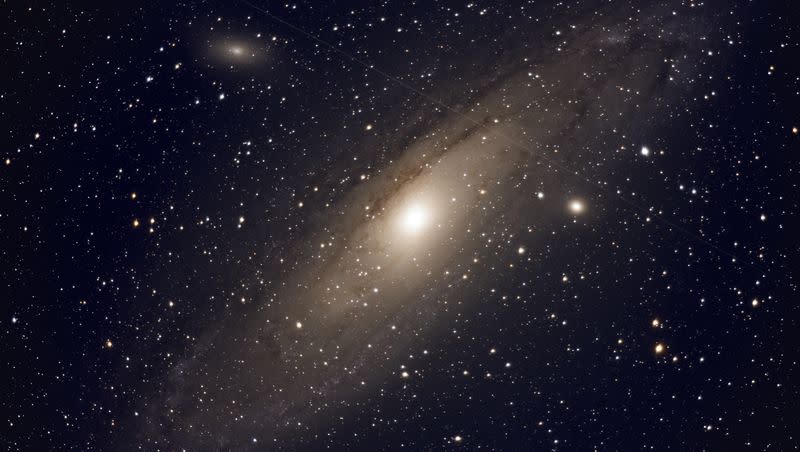Harvard scientist Avi Loeb confirms interstellar material found on Pacific Ocean floor

- Oops!Something went wrong.Please try again later.
From a July expedition off the coast of Papua New Guinea, a collection of small metallic spheres was recovered from the sea floor, which famous Harvard scientist Avi Loeb said Tuesday are from outside our solar system.
Tuesday’s press release, first reported by USA Today, suggests that 57 of the 700 metallic spheres, which were recovered by using a magnetic sled the team dragged through the water and sand, are interstellar in origin “based on the composition and isotopes.” That is unmatched by existing material in our solar system, Loeb said in an interview on “The Michael Shermer Show.”
“This is a historic discovery because it represents the first time that scientists have analyzed materials from a large object that arrived to Earth from outside the solar system,” Loeb wrote in his Tuesday blog post on Medium.
All 700 spheres were sent to be analyzed to four different locations, including Harvard University; University of California, Berkeley; Bruker Corporation and the University of Technology in Papua New Guinea, per Loeb’s blog post about the expedition.
However, the question still remains if the spheres are artificially made or natural in origin. As Loeb pointed out to Shermer, more analysis is needed to determine if any alien technology is present.
The journey began in 2017, when a Maui telescope recorded something entering our solar system — researchers named it Oumuamua, meaning “scout” or “messenger,” per The New York Times.
Who is Avi Loeb?
Loeb, a renowned theoretical astrophysicist at Harvard University, started studying Oumuamua more in-depth the following year. He started to think that the object, shaped like a long tube and gaining speed near the sun, was a light sail.
This thought process sparked more intrigue and interest in the object for Loeb as he sought to find the remnants of Oumuamua on the ocean floor to prove his hypothesis and created the Galileo Project with help from EYOS Expeditions.
Loeb is not only known for his many titles at Harvard University — chairman of the astronomy departments, director of the Institute of Theory and Computation and director of the Black Hole Initiative — but for his focus on extraterrestrial lifeforms, the Times reported.
While many of his colleagues have scoffed at his current expedition and refused to peer review his work, he has remained strong in saying that scientists need to keep open minds to the possibility of more advanced life forms and keep exploring.
What is the Oumuamua paper?
Charles Hoskinson, who is a co-author of the study on the Oumuamua object — which has yet to be peer-reviewed — posted the draft on his X, previously known as Twitter, account.
“This result means we likely have the first extrasolar object ever recovered,” he wrote. “We also have a fairly good idea where the large fragments landed for the next expedition, which will allow us to determine if the object was artificial or just part of another planet’s core.”
I've been waiting for a long time to finally post this paper. I co-authored a paper with Avi Loeb analyzing the samples we collected from the Pacific Ocean. We discovered spherules that appear to be from a different solar system due to their ultra high abundance of Beryllium,… pic.twitter.com/DRNCk5cL3A
— Charles Hoskinson (@IOHK_Charles) August 29, 2023
Related

